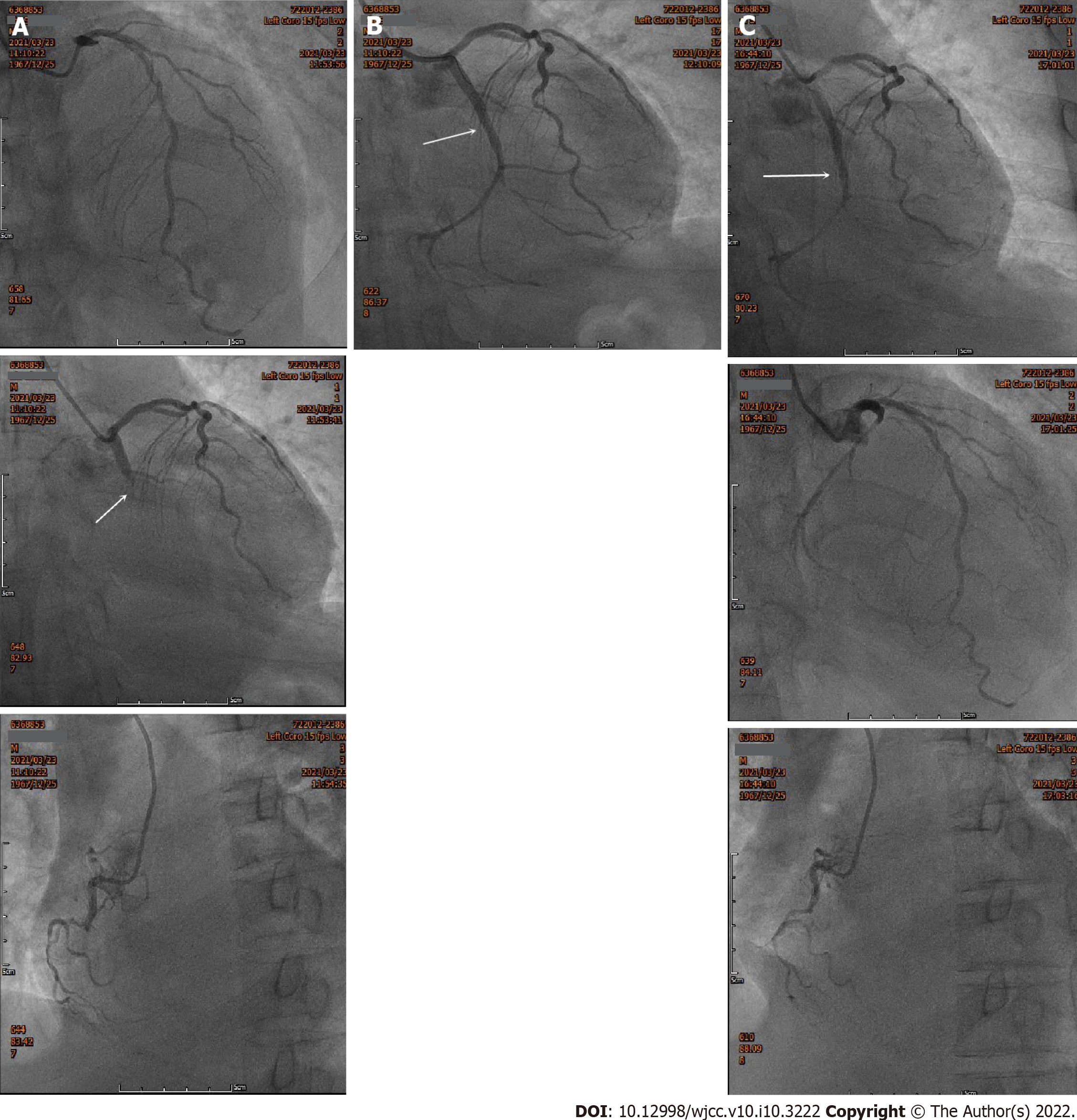Copyright
©The Author(s) 2022.
World J Clin Cases. Apr 6, 2022; 10(10): 3222-3231
Published online Apr 6, 2022. doi: 10.12998/wjcc.v10.i10.3222
Published online Apr 6, 2022. doi: 10.12998/wjcc.v10.i10.3222
Figure 3 Emergency coronary angiography images of the patient.
A: Emergency coronary angiography (CAG) showed that the coronary arteries were left dominant with localized mild stenosis at the proximal left anterior descending branch (LAD), complete occlusion at the proximal circumflex branch (LCX) (white arrow) and diffuse stenosis at the distal RCA, the heaviest of which was about 90%; B: CAG after reperfusion therapy showed that there was no residual stenosis or dissection of the LCX and the TIMI blood flow was grade 3 (white arrow); C: Secondary CAG showed that the original stent of the proximal LCX was unobstructed (white arrow) and there were no significant dynamic changes or thrombus in the LAD and the RCA.
- Citation: Liu WC, Li SB, Zhang CF, Cui XH. Severe pneumonia and acute myocardial infarction complicated with pericarditis after percutaneous coronary intervention: A case report . World J Clin Cases 2022; 10(10): 3222-3231
- URL: https://www.wjgnet.com/2307-8960/full/v10/i10/3222.htm
- DOI: https://dx.doi.org/10.12998/wjcc.v10.i10.3222









